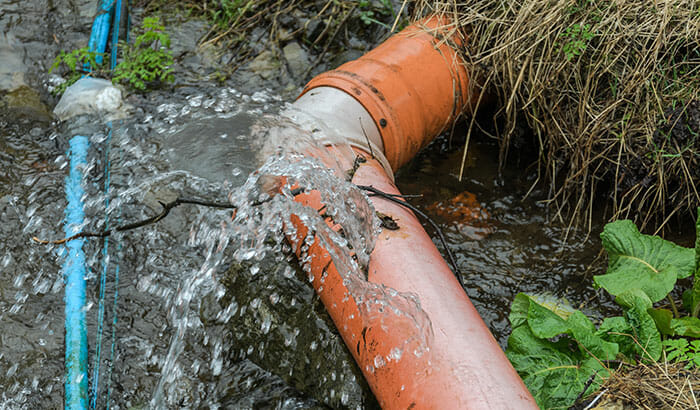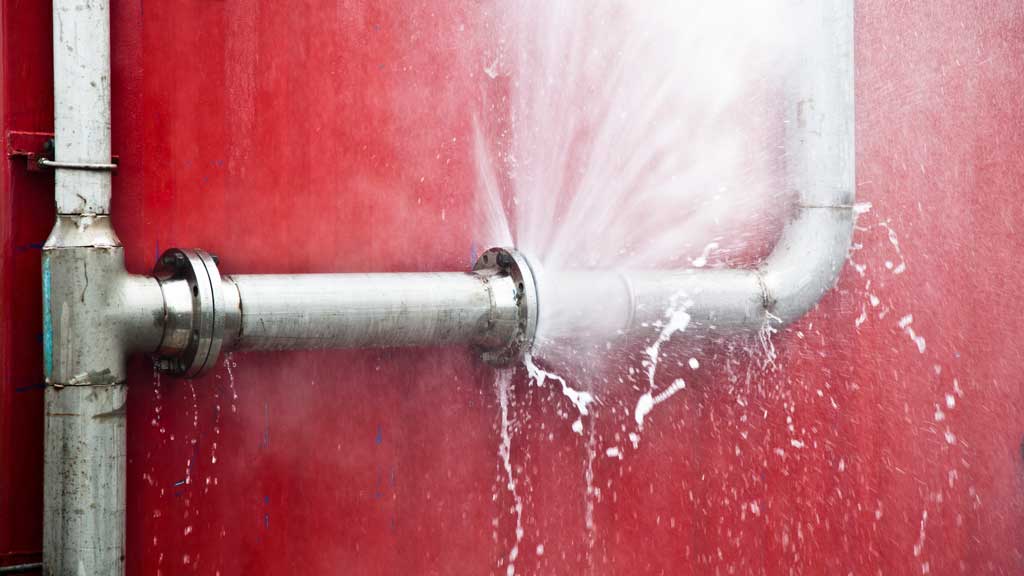How to Fix a Burst Pipe Yourself: A Step-by-Step Guide for Homeowners
How to Fix a Burst Pipe Yourself: A Step-by-Step Guide for Homeowners
Blog Article
Stopping Burst Pipeline: Essential Tips to Protect Your Pipes
Protecting against ruptured pipes is a crucial worry for house owners, particularly throughout colder months when the threat of cold is increased. Implementing calculated steps such as proper insulation, regular evaluations, and keeping constant indoor temperatures can considerably lower the possibility of pipe failure.
Understand Pipe Vulnerabilities
Recognizing pipeline susceptabilities is vital for efficient plumbing maintenance and avoiding costly damages. Several factors add to the susceptibility of pipelines to bursts, including material structure, age, and ecological problems. Older pipes, particularly those made from galvanized steel or polybutylene, often deteriorate in time, resulting in increased risk of leaks and tears.
Temperature level variations can additionally considerably impact pipe integrity. In colder environments, water trapped in pipes can ice up, exerting and increasing stress on the pipe wall surfaces, which might inevitably result in a ruptured. High water pressure can strain pipelines, particularly at bends and joints, increasing the probability of failure.

Insulate Water Lines Properly
Correct insulation of pipes is crucial for preventing freezing and subsequent ruptureds during winter (burst pipe). Protecting your pipes system successfully safeguards versus temperature drops that can result in expensive damage. Begin by identifying prone areas where pipelines are subjected to outside temperatures, such as cellars, attics, and outside wall surfaces
Use foam pipeline insulation sleeves or cover insulation tape around these locations to provide a safety obstacle. Guarantee that all areas of the pipelines, particularly those with restricted warmth exposure, receive sufficient insulation. Pay unique interest to fittings and joints, as these are extra at risk to cold.
When shielding, it's vital to select materials that satisfy regional building regulations and are appropriate for the specific setting. Fiberglass insulation is often suggested for its thermal resistance properties. Furthermore, think about making use of heat cable televisions or tape in extreme problems, which can be connected in to provide supplemental warmth
Consistently examine protected pipes for any type of signs of wear or damages, as compromised insulation can decrease its performance. By taking these positive actions, you significantly lower the threat of pipeline bursts, guaranteeing a trustworthy pipes system throughout the winter season.
Maintain Regular Temperature
A stable interior temperature is important for protecting against burst pipes throughout the freezing months. When temperatures decline, water within pipes can ice up, producing and increasing pressure that may inevitably trigger the pipes to burst.Making use of a programmable thermostat can assist manage interior temperature levels effectively, making sure that rooms with plumbing stay warm even when the home is unoccupied.
In enhancement, it is sensible to enable taps to trickle slightly throughout severe cool spells. This minor flow of water can avoid cold by relieving stress within the pipes. Throughout especially serious try this site weather condition occasions, take into consideration temporarily suspending any kind of nighttime obstacles on your thermostat to preserve a steady warm setting. By implementing these strategies, home owners can significantly lower the threat of pipe ruptureds and safeguard their pipes systems against the extreme wintertime aspects.
Consistently Evaluate Pipes
Normal evaluations of plumbing systems are crucial for avoiding burst pipes and keeping general home honesty. Throughout these evaluations, it is important to check out visible pipelines for indications of deterioration, leaks, or wear.
Additionally, checking links and joints is crucial, as these points are usually at risk to leaks. Property owners must likewise evaluate water pressure degrees, as extreme pressure can strain the plumbing system and raise the risk of pipe bursts.
Take into consideration scheduling expert plumbing assessments at least once a year, especially prior to wintertime, to guarantee your system is prepared for colder temperatures. By being positive in your strategy, you can safeguard your home versus the turbulent and pricey effects of burst pipelines.
Know Emergency Situation Treatments
Comprehending emergency situation procedures is vital for every homeowner, especially after carrying out normal plumbing examinations. Being prepared for a pipes emergency can considerably minimize damage and save expenses.
Next, maintain vital devices convenient. A plumbing emergency package need to consist of a wrench, plunger, and towels, as well as a flashlight and a bucket for little leaks. Furthermore, take into consideration having the contact details for a relied on plumber conveniently available, must the situation intensify past your control.
If you discover a leakage or burst pipeline, immediately shut off the water system click for source and notify your plumber. Record the damages with photographs for insurance policy purposes. Know the indications of potential plumbing concerns, such as unusual water pressure changes or damp areas on walls
Eventually, proactive understanding and quick action are important in handling plumbing emergencies, ensuring your home remains reference protected and decreasing potential damage.

Conclusion
Finally, stopping burst pipelines necessitates a multifaceted strategy that consists of understanding pipe susceptabilities, appropriate insulation, maintaining consistent indoor temperatures, routine evaluations, and understanding of emergency procedures. By carrying out these essential methods, the risk of pipes failings can be substantially lowered, thus ensuring the durability and efficiency of the plumbing system. Aggressive procedures not just safeguard versus possible damages but likewise add to overall water conservation and the protection of home.
In colder environments, water trapped in pipelines can ice up, applying and increasing pressure on the pipeline walls, which may eventually lead to a burst. When temperature levels decrease, water within pipelines can ice up, creating and expanding stress that might ultimately create the pipelines to burst. By carrying out these strategies, property owners can considerably decrease the danger of pipeline ruptureds and guard their plumbing systems versus the rough winter components.

Report this page